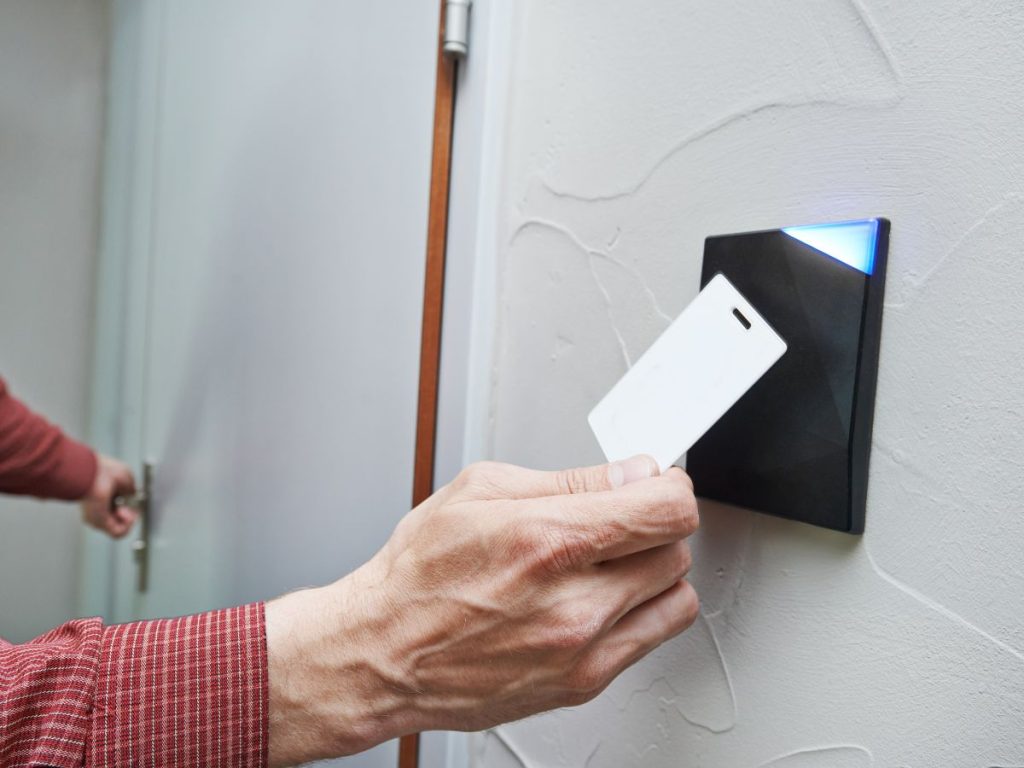
In a world where security is paramount, traditional locks and keys are no longer sufficient to protect our valuable assets and ensure the safety of our spaces. This is where the Door Access Control System steps in as a modern and innovative solution. This article aims to demystify the concept of a Door Access Control System, offering a comprehensive understanding of its functionalities, benefits, and how it can revolutionize security measures for both residential and commercial spaces.
A Glimpse into the Door Access Control System
The Door Access Control System is a technologically advanced security solution that replaces traditional keys with electronic access methods, such as key cards, biometric scans, or mobile apps. This system allows authorized individuals to enter a designated area while restricting access to unauthorized personnel. By eliminating the need for physical keys, it enhances security, convenience, and offers a higher level of control over who enters a premises.
Key Components and Working Mechanism
A Door Access Control System comprises several key components that work seamlessly to regulate access. These include:
Access Control Panels: These serve as the brain of the system, managing user authentication and access permissions.
Card Readers/Biometric Scanners: These devices capture user credentials, such as card swipes or fingerprint scans, to grant or deny access.
Electronic Locks: These locks can be electromechanical or electromagnetic, and they are controlled by the access control panel.
Credentials: Users are provided with unique credentials, such as key cards or PINs, which are programmed into the system to grant access.
The system operates by verifying the user’s credentials against the database and allowing or denying entry based on predefined access rules. This real-time authentication ensures only authorized individuals can enter.
Types of Door Access Control Systems
Door Access Control Systems come in various types, each catering to specific security needs. Some common types include:
Card-Based Systems: Users are granted access through swipe cards or proximity cards.
Biometric Systems: Access is granted through fingerprint, iris, or facial recognition.
Keypad/PIN Systems: Users input a unique Personal Identification Number (PIN) to gain entry.
Mobile App-Based Systems: Smartphones are used as access credentials, enhancing convenience.
The choice of system depends on factors like security requirements, budget, and user convenience.
Benefits of Door Access Control Systems
Embracing a Door Access Control System offers an array of benefits:
Enhanced Security: Unauthorized access is significantly reduced, preventing potential threats and breaches.
Convenience: No need to carry physical keys; access is granted through easily manageable credentials.
Audit Trail: Detailed logs provide insight into who accessed a particular area and at what time.
Remote Management: Some systems allow remote access control, enabling administrators to grant or revoke access remotely.
Scalability: The system can be expanded to accommodate growing needs.
Customized Access: Different users can have varying access privileges based on their roles.
Emergency Lockdown: In case of emergencies, access can be restricted instantaneously.
Implementing a Door Access Control System
Deploying a Door Access Control System involves several key steps:
Assessment: Evaluate security needs, identify vulnerable areas, and determine access requirements.
System Design: Design the system layout, including access points, reader placement, and control panel locations.
Installation: Install hardware components, such as card readers, locks, and control panels, following the design plan.
Credential Setup: Program user credentials and access rules into the system.
Testing: Conduct thorough testing to ensure seamless functioning of the system.
Training: Train users and administrators on how to use the system effectively.
Maintenance: Regularly maintain and update the system to ensure optimal performance.
Integration with Other Systems
One of the remarkable features of a Door Access Control System is its ability to integrate with other security and building management systems. Integration with CCTV cameras, alarms, and time and attendance systems enhances overall security and operational efficiency. For instance, the system can automatically trigger alarms and CCTV recording when unauthorized access is detected.
Cost Considerations and Return on Investment (ROI)
While implementing a Door Access Control System involves upfront costs, it offers a substantial return on investment over time. Consider factors like hardware costs, installation expenses, and ongoing maintenance. The benefits of enhanced security, reduced theft, minimized administrative overhead, and potential insurance discounts contribute to long-term savings.
Future Trends and Innovations
As technology continues to evolve, so do Door Access Control Systems. Future trends may include:
Biometric Advancements: Continued enhancements in biometric technology, such as improved accuracy and faster authentication.
Mobile Integration: Further integration with mobile devices for seamless access management.
Cloud-Based Solutions: Cloud-based systems offering remote management and data storage.
Artificial Intelligence: AI-powered analytics for advanced security and predictive insights.
Conclusion
The Door Access Control System represents a leap forward in security technology, providing a sophisticated and efficient solution to safeguarding spaces. By understanding its components, benefits, and implementation process, individuals and organizations can make informed decisions about embracing this innovative security measure. As the world becomes increasingly digital and security concerns escalate, the Door Access Control System stands as a beacon of enhanced protection, convenience, and peace of mind.